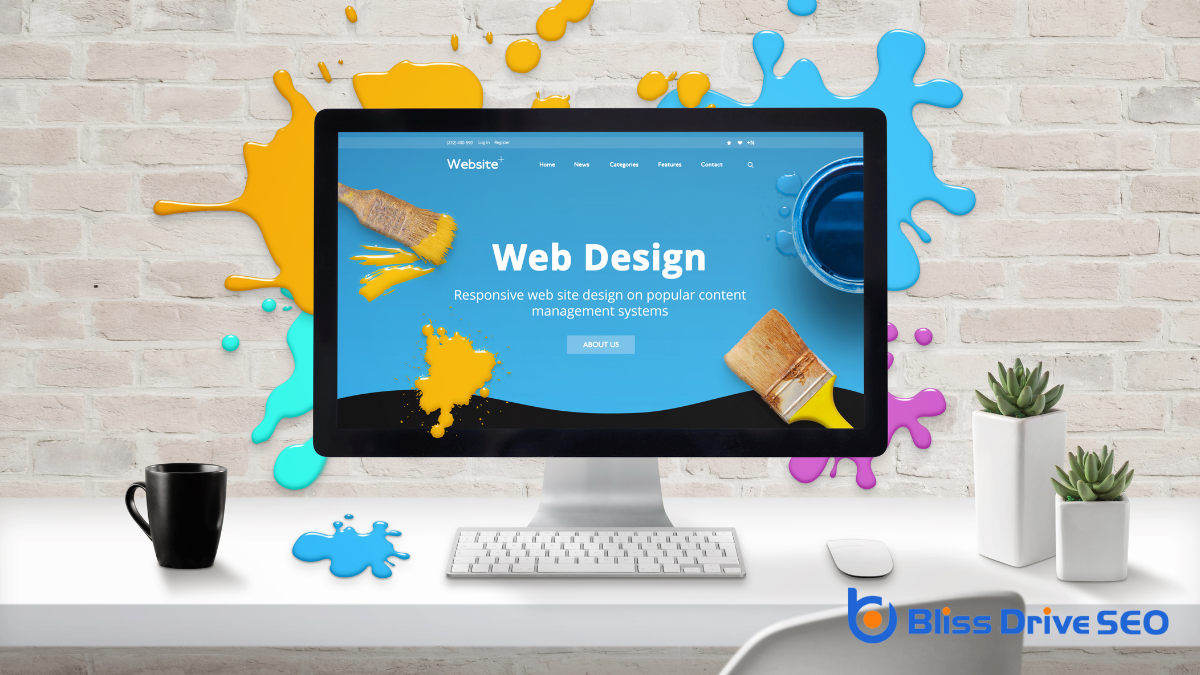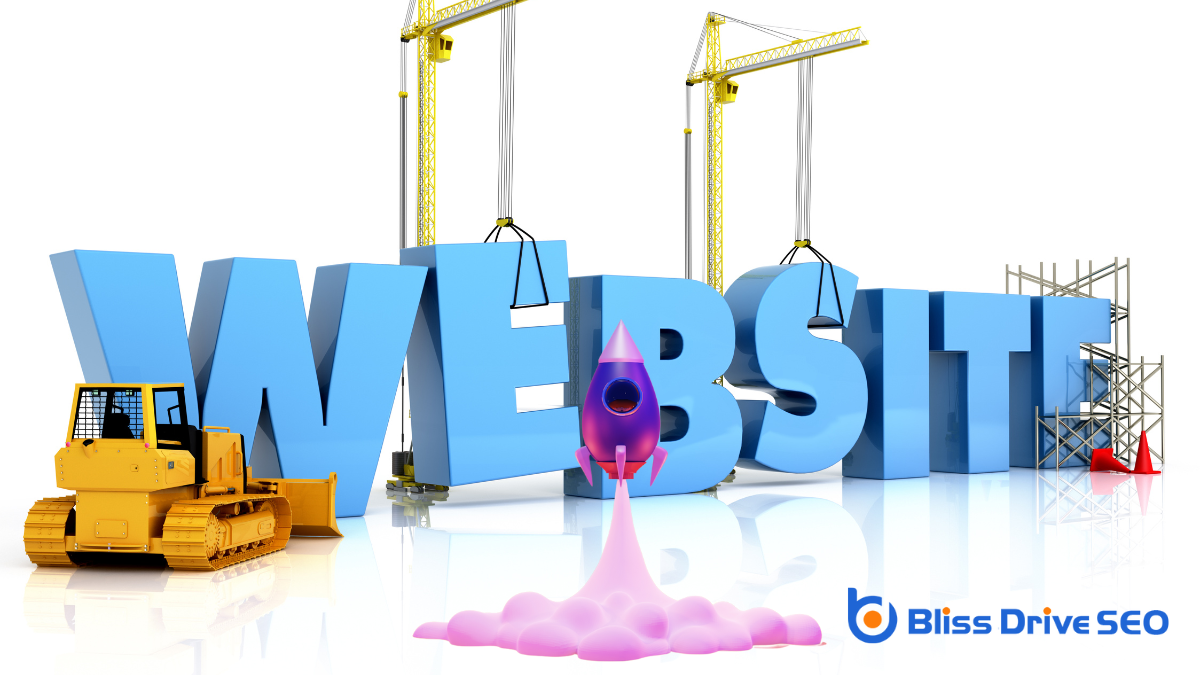Digital Marketing Services
Learn More About Us

When you're tackling a web design project, understanding the five essential steps can make all the difference in achieving a seamless user experience. You start with Planning, where defining your goals and understanding your audience sets the stage for success. Then, the Design phase lets you craft visually appealing layouts and choose the right colors and fonts. Development follows, translating your design into a functional website. Testing guarantees everything works perfectly across devices. Finally, Launching the site involves more than just going live; there's SEO to take into account and ongoing maintenance. But what happens when these steps don't go as planned?
Planning is the cornerstone of any successful web design project. It sets the foundation for everything that follows, so you need to approach it with care and attention. Start by identifying your goals. What do you want your website to achieve? Whether it's increasing sales, sharing information, or building a brand, having clear objectives will guide your entire process.
Next, understand your audience. Who'll visit your site, and what are their needs? Consider their preferences and behaviors to create a user-friendly experience. This might involve researching demographics, interests, and online habits to tailor your site accordingly.
You'll also want to define your site's scope. This involves listing the features and content you'll need. Be realistic about what you can achieve within your budget and timeline. It's essential to avoid scope creep, which can derail your project.
Additionally, gather resources like content, images, and any other materials needed. Organize these elements to guarantee a smooth changeover into the design phase.
Finally, create a sitemap to outline the structure of your site. This visual guide will help you and your team maintain clarity and focus as you move forward.

Design is often the most visually engaging phase of the web design process, where ideas begin to take shape. At this stage, you'll translate your plan into a visual representation. Start by choosing a layout that aligns with your goals and audience. This will serve as the skeleton of your site, determining how users will navigate and interact with your content.
Next, focus on typography. Select fonts that enhance readability and reflect your brand's personality. Remember, consistency is key. Stick to a few font styles to maintain a unified look.
Then, consider color schemes. Colors evoke emotions and can influence user behavior, so choose wisely. Make certain your palette enhances the user experience and adheres to your brand's identity.
Images and graphics play an essential role, too. Opt for visuals that are high-quality and relevant to your content. They should support your message, not distract from it.
Finally, make sure that your design is responsive. Users will access your site from various devices, so make certain it adapts to different screen sizes seamlessly. This attention to detail will create a more engaging and accessible experience for your users.
With the design in place, it's time to plunge into the development phase, where your vision becomes a functional reality. This stage involves translating your static designs into a dynamic website. You'll start by setting up the environment and choosing the right tools and technologies like HTML, CSS, and JavaScript. These form the backbone of your site, dictating its structure, style, and interactivity.
Next, you'll focus on building the front-end and back-end systems. The front end is what users see and interact with directly. It requires meticulous attention to detail to guarantee everything aligns with the design blueprint.
The back-end, on the other hand, manages data and guarantees smooth communication between the server and the user's browser. You'll need to implement databases and server-side scripts here.
Integrating content management systems (CMS) is another critical task. A CMS allows you to update content efficiently without diving into code each time.
As you develop, keep user experience in mind, guaranteeing the site is responsive and accessible across different devices and browsers. This phase is where coding prowess meets creativity, transforming your design into a seamless, interactive digital experience.
As development wraps up, it's crucial to guarantee everything functions flawlessly before launching the website. Testing guarantees that the user experience is smooth and all features work as intended. By thoroughly testing, you'll identify any bugs or issues that need fixing, guaranteeing your site runs smoothly for every visitor.
Start by checking the website's functionality. Test every feature, button, and link to make sure they perform correctly. Simulate different user scenarios to uncover potential issues. You'll want to guarantee the website is both bug-free and intuitive.
Next, focus on compatibility. Websites should display and function seamlessly across various browsers and devices.
Test on:
Don't underestimate the power of user feedback. Invite a small group to interact with your site, providing insights into usability and potential improvements.
Testing is the final step to confirm your website is polished and ready to engage users effectively.

After thorough testing and refinement, it's time to launch your website and share it with the world. This is an exciting step, but it requires careful execution to guarantee everything goes smoothly.
First, double-check that your domain nameThe address of a website, crucial for branding and SEO. is correctly registered and linked to your hosting service. Make sure all the files are uploaded to your server, and verify that your website displays correctly on multiple devices and browsers.
Next, update your website's SEO settings. Confirm that your meta tagsHTML tags that provide information about a web page to search engines and visitors., descriptions, and keywordsWords or phrases that users type into search engines to find information. are optimized for search engines, which helps users find your site more easily. Consider submitting your website's sitemap to search engines like Google to enhance its visibility.
Before you officially go live, notify your audience about the launch date through social media or newsletters. This builds anticipation and excitement.
Once live, monitor your site closely for any issues. Track analyticsThe systematic computational analysis of data or statistics to gain insights and support decision-ma... to see how users interact with your content and make adjustments as needed.
Lastly, remember that launching your website isn't the end but the beginning. Stay committed to maintaining and updating your site regularly, guaranteeing it remains relevant and valuable to your audience.
By following these five key steps, you'll create a successful website that meets your goals and connects with your audience. Start by planning effectively to identify your objectives and understand your target users. Design an engaging layout with the right colors and typography. Develop your site using reliable coding practices and content management systems. Test thoroughly to guarantee everything works seamlessly across devices. Finally, launch confidently with proper domain registration, SEO optimization, and a plan for ongoing maintenance.
